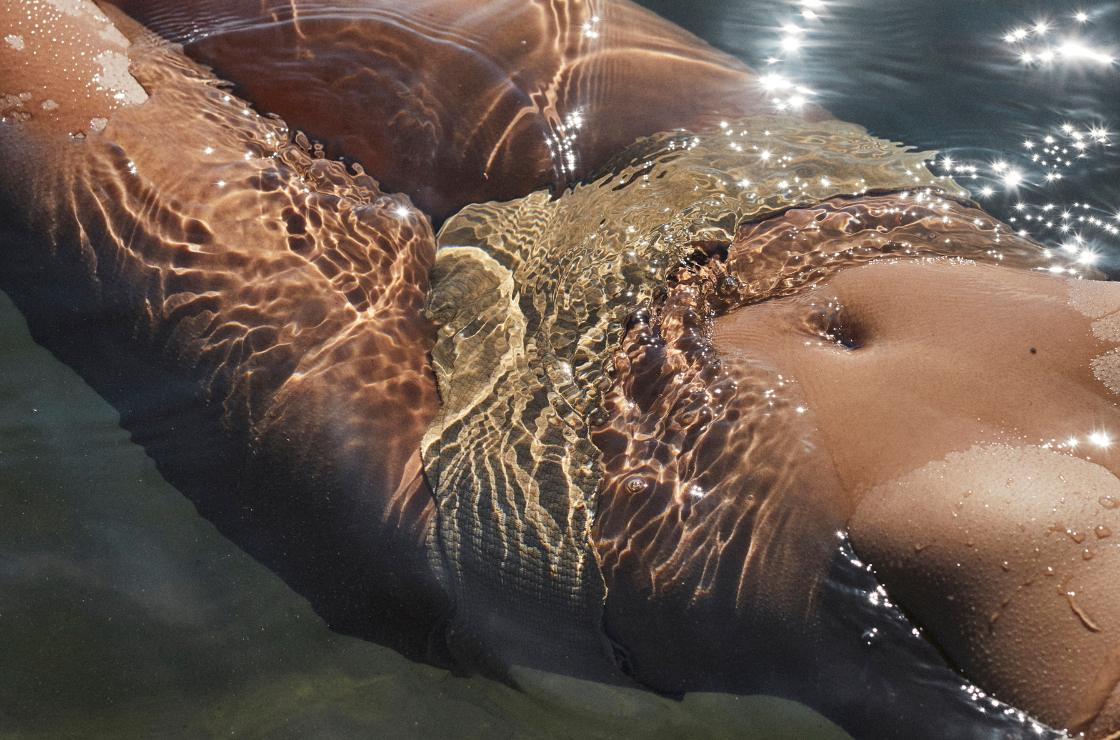
What do you picture when you think of glowing skin? If it’s a radiant face, you’re not alone.
When it comes to skincare, it’s only natural to gravitate towards the star that’s always on show. The only problem is, when the time comes to peel back the layers, the lack of love you show your limbs becomes apparent.
Just like your face can experience periods of dullness, dry patches and the signs of aging, your arms, legs, back (and pretty much anywhere else on your body) can be subject to the same.
Although it can be easy to just throw on some long sleeves and cover up, taking care of your skin for top-to-toe confidence doesn’t have to be a chore. Like most things, it’s all about setting daily habits that can make a big difference.
The main differences between facial and body skin
Skin thickness: Facial skin is thinner than the skin on our bodies. Of course, this varies depending on which part of the body, however in general, the fat layer under the skin is thicker on the body than the face. Another unique difference is that some areas of our body such as the hands and soles of the feet have a whole extra layer in the epidermis (the top layer of the skin) that covers them. This additional layer allows for increased resilience and stretch in these areas.
Skin cell turnover rate: There is a naturally occurring slower skin cell turnover rate in the skin on the body, often resulting in drier, thicker, and scalier skin. As it takes longer to replace existing skin cells with new ones, dead cells can linger for longer on your body making it appear dry, dull and sometimes even flaky.
Dryness: The skin on the body has fewer oil-producing sebaceous glands than the face–the highest concentration being found in our t-zone–so dryness tends to be more of a concern.
How the skin ages on the body vs face
The skin on our body—apart from frequently exposed areas such as the arms and hands—does tend to have better protection against UV rays because we generally cover it up. As exposure to the sun is one of the primary causes of skin aging, this means that the rate of extrinsic or external aging in covered areas will be much slower.
Age-related changes to the skin on the body are like those on the face in that they can include thinning, sagging, wrinkling and in areas frequently exposed to the sun, the appearance of age spots. Broken blood vessels and areas of dryness as well as skin health concerns such as skin cancer are also more common as we age and appear on the skin on our body.
How to care for the skin on your body
Most of us follow a regular skincare regimen that pays special attention to the skin on our face, while the skin on our body generally plays second fiddle. But, it is equally important. A simple yet effective routine should be applied to body care too.
Turn down the heat — Ensure that you take showers or baths using warm water. Warm water is much less drying than hot and helps to avoid unnecessary capillary dilation which can lead to visible broken capillaries. These are quite common across the décolletage which is the primary area we tend to have the shower beating down on us.
Choose your body wash wisely— When cleansing the body, opt for mild gentle cleansers that do not strip vital oils as this may cause irritation and lead to a compromised barrier and dehydration. For problem areas such as chest and back breakouts, try a naturally antibacterial non-foaming cleanser.
Protect from the sun — Each morning ensure that body skin exposed to the sun is adequately protected and apply a broad-spectrum SPF, ensuring that you re-apply according to directions if you are out on the sun for prolonged periods, swimming or exercising.
Moisturize daily — When it comes to hydration, a daily hydrating lotion or body moisturizer is key. Remember to reapply after showering and pay special attention to particularly dry areas such as elbows, knees, and heels.
Regular exfoliation is particularly important for the skin on the body
Our skin is constantly shedding dead cells. In young healthy skin, this process occurs naturally around every 30 days and encourages fresh new cells to push their way to the skin’s surface. These fresh cells are plump and smooth and change the appearance of the skin giving it increased luminosity.
However, the skin on the body sheds slower than facial skin. As we age, the rate at which this process occurs begins to slow down even more and dead skin cell build-up accumulates on the top layer of the skin. This accumulation of dead cells can make the skin appear dull.
Exfoliating dead skin cell build-up from this outer layer of the skin to speed up or mimic the skin’s own natural process of shedding helps to reveal fresher, smoother skin underneath. Regular exfoliation can also help products penetrate the skin more evenly and effectively, encouraging the production of vital proteins that form the skin’s supportive layer such as skin-plumping collagen.
Consider an inner beauty routine
At The Beauty Chef, we believe that healthy, glowing skin (from top to toe) begins with good digestion. The even better news? Our supernutrient powders, elixirs, capsules and chewables benefit the skin on your body just as much as the skin on your face.
For example, the pre, pro & postbiotics in Glow® work to support a healthy gut—and when the gut is healthy, the benefits are reflected everywhere for an all-over glow. Same goes for breakouts—Clear Skin™ contains vitamin A and zinc to support skin structure and repair from within (to target spots no matter where they appear). And Collagen Boost™ contains vitamin C to support top to toe collagen production.
Unlike a topical routine where you may use different products below the neck, our supercharged ingestibles work from within to provide whole-body benefits.





